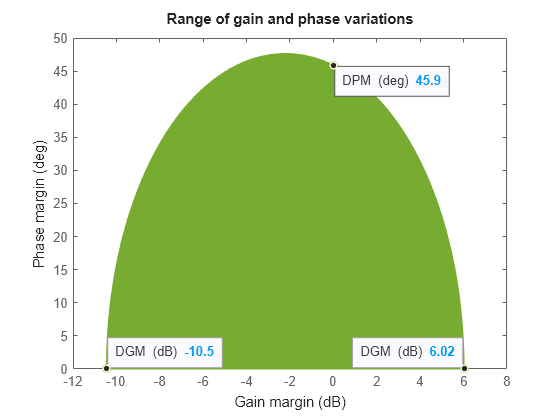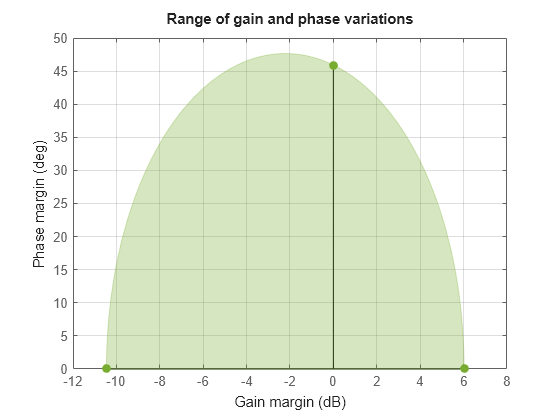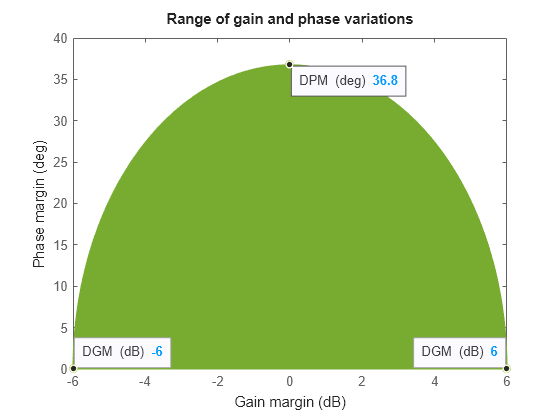getDPM
Disk-based phase variation corresponding to disk-based gain variation
Description
DPM = getDPM(DGM)DGM. In the model used by umargin, gain and
phase variation are represented as a multiplicative factor
F(s) taking values in a disk centered on the real
axis. The disk described by its real-axis intercepts DGM =
[gmin,gmax], which represent the relative amount of gain variation
around the nominal value F = 1. Because the disk is complex-valued, the
disk described by DGM also represents a certain amount of phase
variation, DPM. For more information, see getDGM.
Examples
Input Arguments
Output Arguments
Version History
Introduced in R2020a




![Uncertainty disk characterized by DGM = [0.5,2]](disk_dgm_argdesc.png)